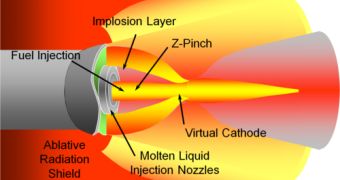Us humans have built some pretty fast stuff in our times. By our own standards anyway, by more "universal" standards, even the fastest thing we ever built is a slouch. But we're working on it.
Researchers at the University of Huntsville in Alabama are using "dilithium crystals" to build a fusion impulse rocket engine which would propel any spacecraft powered by it to speeds we haven't achieved yet.
First, a few clarifications, the engine is far from complete, the researchers are still figuring out how to build it. Fusion reactors or, in this case, engines are still theoretical, no one has figured out how to build one and no one will in the short-term future.
But fusion rocket engines, if created, could drastically improve the performance of spacecraft. The engine these researchers are working on should be able to get a ship to Mars in just three months, far faster than it is currently possible. Curiosity took almost nine months to get to the red planet.
Second, they're not exactly using dilithium crystals, a fictional element from the Star Trek universe that powers the warp drive in spaceships.
They are however planning to use deuterium, the stable Hydrogen isotope, and a Lithium isotope, Li6, arranged in a crystal structure, to generate the fusion reaction.
Again, that's all theoretical, if the fusion reaction can be achieved, an engine like this could generate huge amount of thrust, especially relative to its size, comparable to Saturn V, the most powerful rocket ever built.
The supposed three-month trip to Mars is set to take place in 2031 and the team believe they can have the design ready by 2030. But there are plenty of hurdles to be overcome until then.
If it does work though, spacecraft powered by an engine like this could reach some 62,600 mph, or 28 km/s, over 100,000 km/h.
For comparison, the fastest man-made object (heliocentric speed) at this point is Voyager 1 which travels at 17.26 km/s or 10.72 mi/s. The fastest thing ever built, if you measure orbital velocity, are the two Helios probes sent towards the Sun, which reached 252,792 km/h or 157,078 mph (43.63 mi/s or 70.22 km/s).

 14 DAY TRIAL //
14 DAY TRIAL //